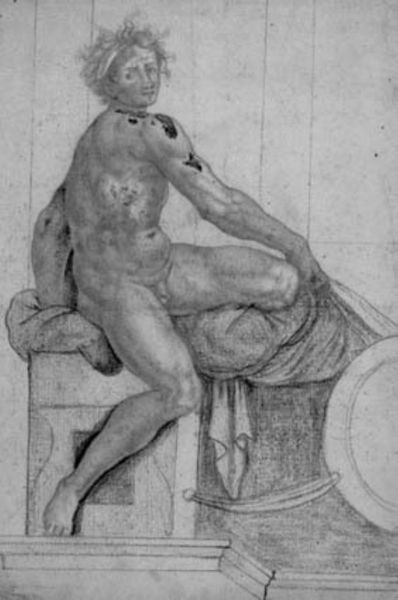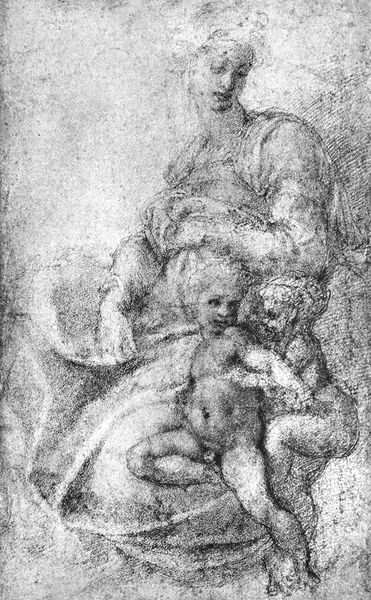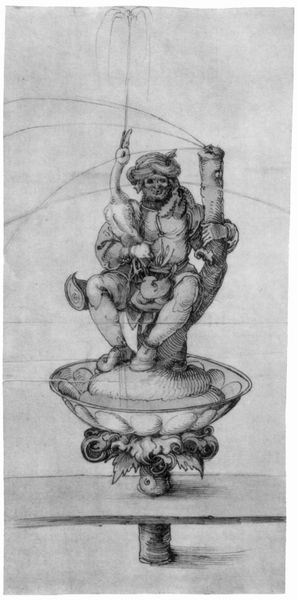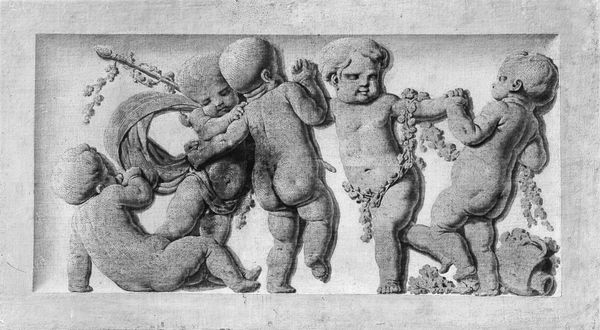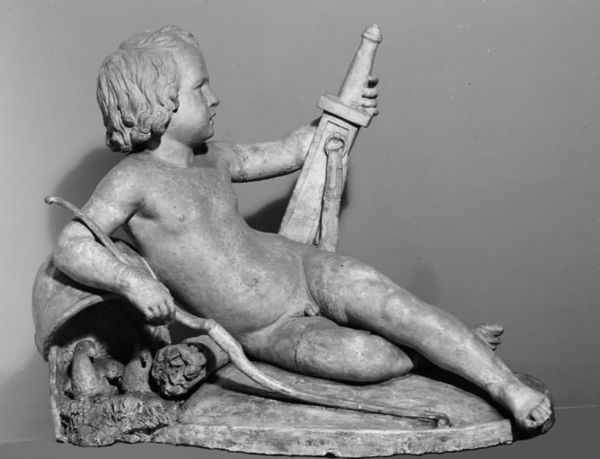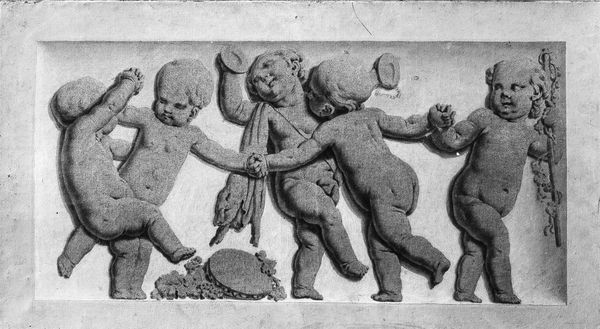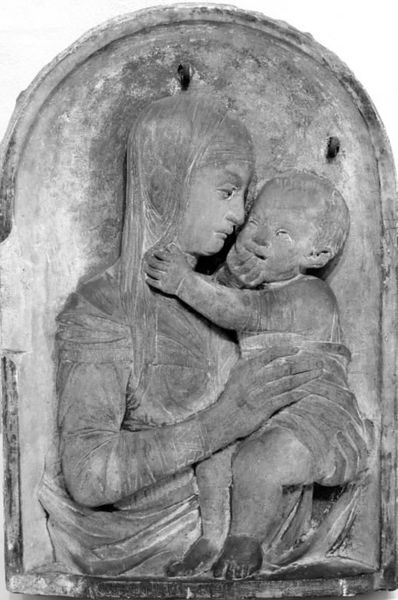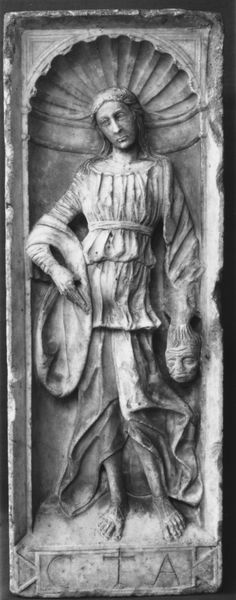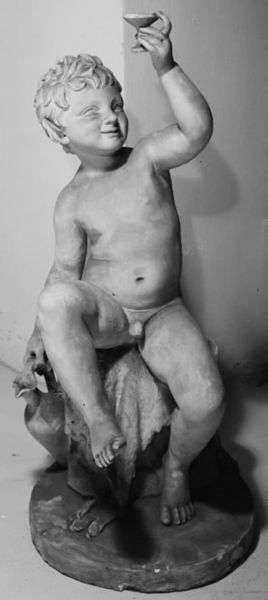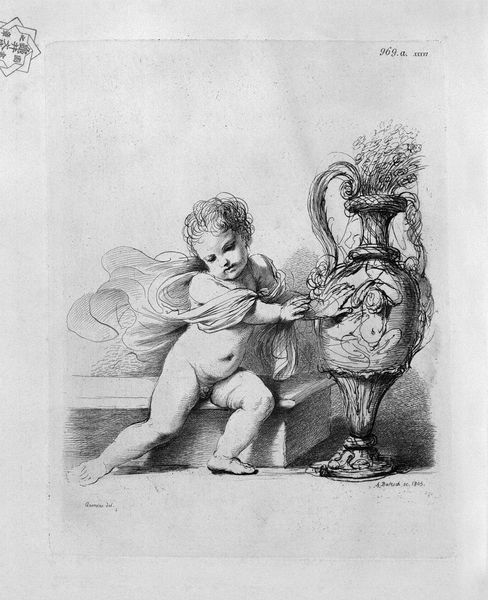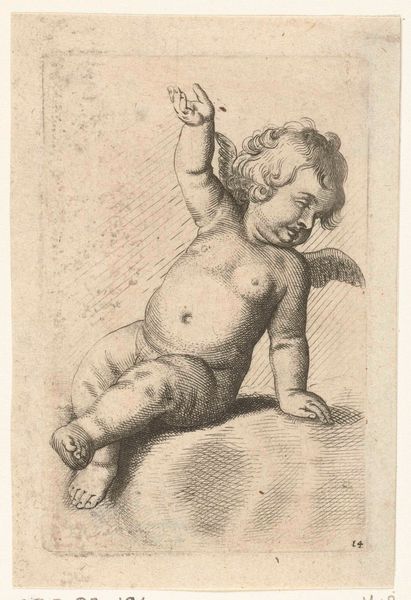
drawing, pencil
#
portrait
#
drawing
#
figuration
#
black and white
#
pencil
#
northern-renaissance
#
nude
#
front view
Copyright: Public domain
Curator: Here we have Albrecht Dürer’s “Seated Nude Child,” a pencil drawing from 1506. Dürer, as a pivotal figure of the Northern Renaissance, consistently engaged with the human form and its representation within the socio-political context of his time. Editor: Oh, he’s chubby! This little guy just screams awkward innocence to me. Look at that squished little fist near his face, like he's contemplating something really heavy...probably whether to grab another pastry. Curator: Well, you touch on an interesting aspect. During the Renaissance, childhood was often idealized, or used to signify innocence, divine blessing, or potential for moral development. Dürer, however, gives us this unflinching gaze, a certain physical weight, and detailed—almost scientific—rendering of infant anatomy. Editor: Scientific? I just see folds and rolls that demand to be tickled! But, yes, there's something strangely knowing about his eyes, a worldliness you wouldn't expect. And is he holding some kind of pointer, like a tiny conductor about to lead an orchestra of cherubs? Curator: What he’s holding may hint at Dürer’s deeper concerns: in 1506, he had only just travelled back from Italy, and he inscribed this work in the top center with the year and his monogram. The object the child holds seems related to drawing, or pointing, thus revealing some meta-commentary by Durer about the process of its production and a demonstration of artistic virtuosity that places him, competitively, in line with Italian masters. Editor: Ooh, meta! It's like he's saying, "Hey Michelangelo, check out my baby AND my drawing skills!" All kidding aside, the precision in his work, especially the way he captures light on the child's skin, is incredible, even haunting. The softness of his rendering adds an uncanny, surreal element when juxtaposed with the heavy figure and intense gaze. Curator: Precisely. The Northern Renaissance wrestled with different ideals than its Italian counterpart; where Italy was often reaching toward idealized beauty, artists north of the Alps frequently pursued detailed realism, as a reflection of the material and spiritual world that served more specific social functions in its emphasis. Dürer occupies an intriguing space, here showcasing a naturalism not to portray what “should” be, but, rather, what simply is, including the sometimes unflattering reality of childhood. Editor: Well, Dürer definitely gave us something to chew on... or maybe nibble on, like those adorable baby rolls. Curator: Indeed. It invites us to reconsider the construction of childhood—and its intersection with artistry—across time and cultures.
Comments
No comments
Be the first to comment and join the conversation on the ultimate creative platform.
